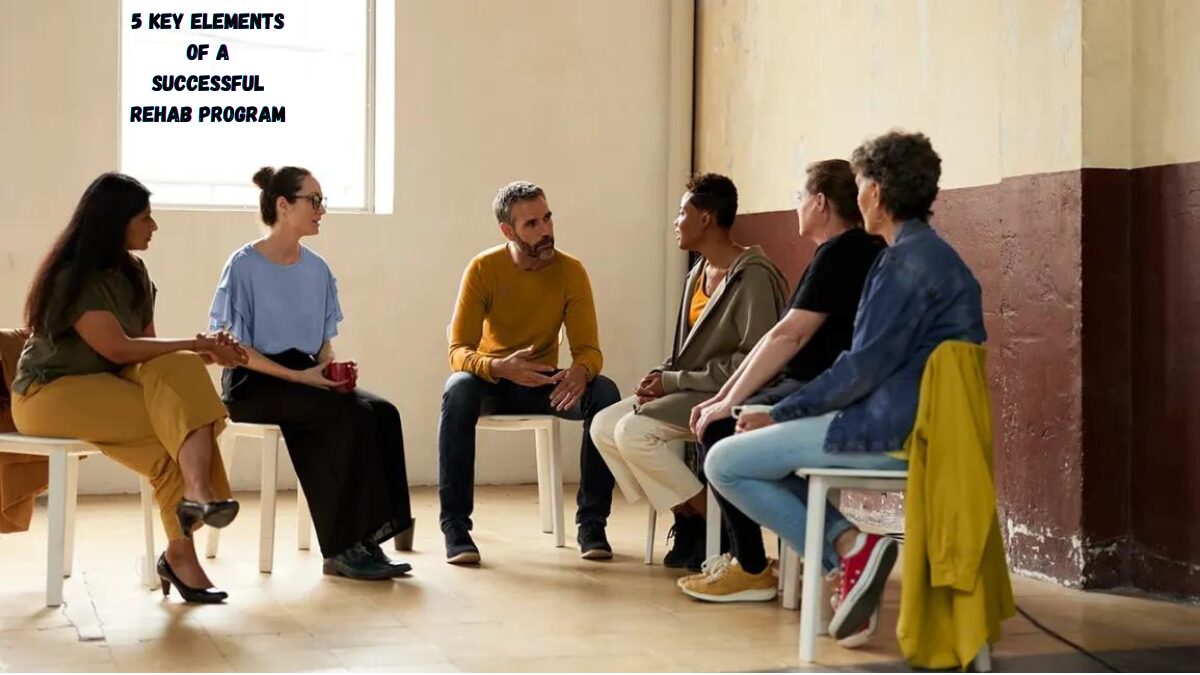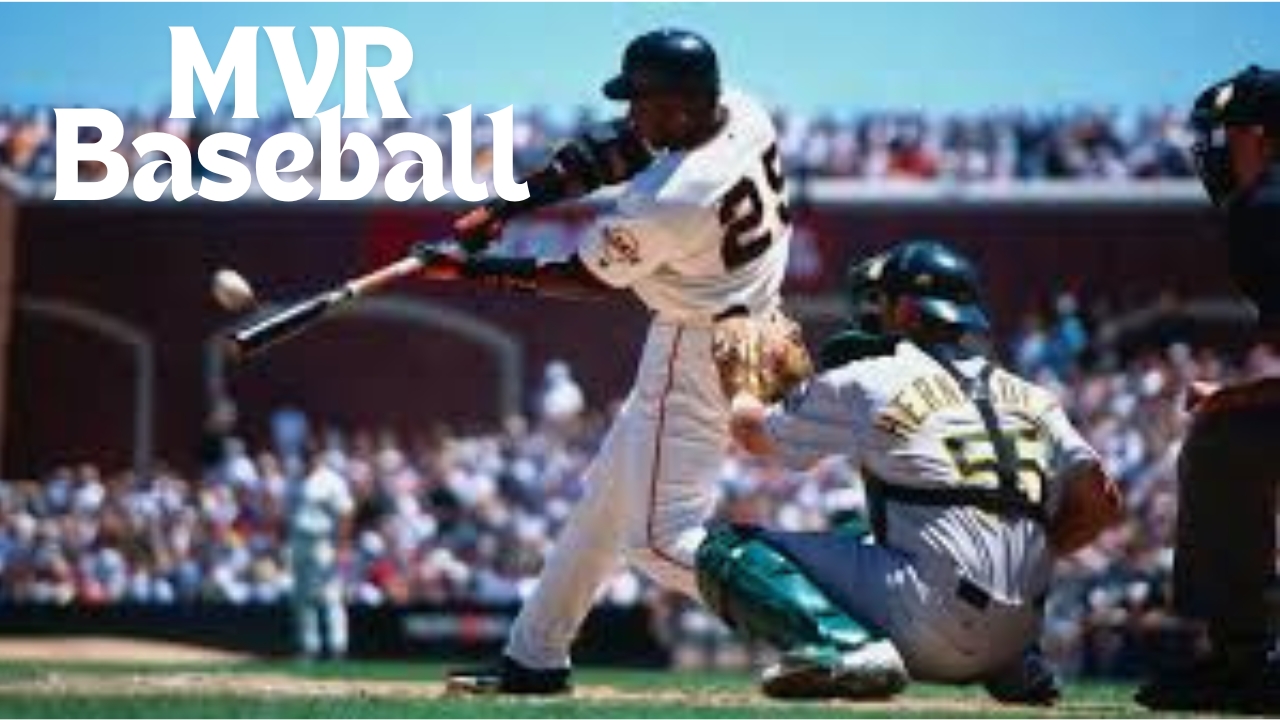Sports
Why Athletes Get Injured

Introduction
Sports injuries are a common and often inevitable part of an athlete’s life. Whether you’re a professional athlete or a weekend warrior, understanding why injuries occur can help you take steps to prevent them and keep yourself in the game. So, why do athletes get injured? Let’s dive into the myriad of reasons behind these unfortunate setbacks.
Common Types of Sports Injuries
Acute Injuries
Acute injuries happen suddenly and are usually the result of a specific trauma or impact. Think of a football player twisting their ankle or a basketball player landing awkwardly after a jump. These injuries can range from sprains and strains to fractures and dislocations.
Overuse Injuries
On the other hand, overuse injuries develop over time due to repetitive stress on a particular part of the body. These are common in sports that involve continuous, repetitive motions, like running, swimming, or tennis. Examples include shin splints, tendonitis, and stress fractures.
Physical Causes of Injuries
Muscle Imbalances
When certain muscles are stronger than their opposing muscles, imbalances occur, leading to improper movement patterns and increased injury risk. For example, if the quadriceps are significantly stronger than the hamstrings, it can put undue stress on the knee joint.
Overtraining
Pushing the body beyond its limits without adequate rest can lead to overtraining, which weakens muscles and joints, making them more susceptible to injury. It’s crucial for athletes to find a balance between training hard and allowing enough time for recovery.
Poor Biomechanics
Improper technique or body mechanics during sports activities can place excessive strain on muscles and joints. This can stem from not having proper training, using incorrect equipment, or simply having a natural biomechanical disadvantage.
External Factors Contributing to Injuries
Equipment Failure
Sometimes, injuries are caused by equipment failure. Worn-out shoes, faulty protective gear, or poorly maintained sports facilities can all contribute to accidents and injuries.
Environmental Conditions
Weather conditions like extreme heat, cold, or wet surfaces can significantly increase the risk of injury. Slippery surfaces can lead to falls, while extreme temperatures can cause heatstroke or hypothermia.
Psychological Factors
Stress and Anxiety
Mental stress and anxiety can affect an athlete’s focus and decision-making, leading to mistakes that cause injuries. High-pressure situations might push athletes to take risks they normally wouldn’t, increasing their chances of getting hurt.
Lack of Focus and Concentration
Even momentary lapses in concentration can result in injuries. Athletes need to maintain high levels of focus during training and competition to avoid accidents.
The Role of Training and Conditioning
Importance of Proper Training
Proper training and conditioning are essential for preparing the body for the physical demands of sports. This includes strength training, cardiovascular fitness, and flexibility exercises.
Warm-up and Cool-down Routines
Incorporating warm-up and cool-down routines can significantly reduce the risk of injury. Warming up prepares the muscles and joints for activity, while cooling down helps the body recover and reduces muscle soreness.
Impact of Nutrition and Hydration
Nutritional Deficiencies
A balanced diet is crucial for maintaining muscle strength and joint health. Nutritional deficiencies can weaken the body’s ability to repair tissues and maintain energy levels, making injuries more likely.
Dehydration
Dehydration can impair physical performance and increase the risk of heat-related illnesses. Proper hydration helps maintain muscle function and overall physical health.
Age and Experience Levels
Youth Athletes vs. Seasoned Athletes
Youth athletes are more prone to certain types of injuries due to their growing bodies and sometimes, lack of experience. Conversely, older athletes might face issues related to wear and tear or decreased flexibility.
How Experience Impacts Injury Rates
Experienced athletes might have a better understanding of their limits and proper techniques, which can help in injury prevention. However, they might also push themselves harder, leading to overuse injuries.
Sport-Specific Risks
Contact Sports vs. Non-Contact Sports
Contact sports like football, hockey, and rugby have higher injury rates due to the physical nature of the games. Non-contact sports, like running or swimming, carry different risks, primarily related to overuse injuries.
High-Impact Sports
High-impact sports, such as gymnastics and martial arts, involve intense physical activity that can lead to acute injuries. Proper technique and conditioning are vital in these sports to minimize injury risks.
Preventative Measures
Proper Technique and Form
Learning and maintaining proper technique is crucial in preventing injuries. This involves regular training, using the right equipment, and getting guidance from experienced coaches.
Use of Protective Gear
Wearing appropriate protective gear, like helmets, pads, and braces, can prevent many injuries. It’s important to ensure this gear is well-maintained and fits properly.
Rehabilitation and Recovery
Importance of Proper Rehabilitation
After an injury, proper rehabilitation is key to recovery and preventing future injuries. This includes physical therapy, rest, and gradually returning to activity.
Common Recovery Strategies
Common recovery strategies include rest, ice, compression, and elevation (RICE), physical therapy, and sometimes, surgery. Listening to medical advice and not rushing back too soon is crucial for full recovery.
The Role of Coaches and Support Staff
Guidance and Support
Coaches and support staff play a vital role in an athlete’s training and injury prevention. They provide guidance on technique, monitor training loads, and offer support during recovery.
Injury Prevention Programs
Many sports teams implement injury prevention programs that include strength training, flexibility exercises, and education on proper techniques.
Technological Advances in Injury Prevention
Wearable Technology
Wearable technology, like fitness trackers and smart clothing, can monitor physical activity and help identify potential injury risks by tracking movement patterns and exertion levels.
Advanced Diagnostics
Advanced diagnostic tools, such as motion capture and biomechanical analysis, can help identify and correct improper movement patterns that might lead to injuries.
Case Studies and Real-Life Examples
Famous Athletes and Their Injuries
Many famous athletes have faced significant injuries and made successful comebacks. For example, Tiger Woods’ multiple surgeries and comebacks highlight the importance of proper rehabilitation and determination.
Lessons Learned from Their Experiences
These athletes’ experiences teach valuable lessons about resilience, the importance of listening to one’s body, and the benefits of proper training and recovery.
Conclusion
Injuries are an unfortunate part of sports, but understanding the various factors that contribute to them can help athletes take steps to prevent them. From physical causes and psychological factors to proper training and technological advances, there’s a lot that can be done to minimize injury risks. By staying informed and proactive, athletes can enjoy their sports while staying healthy and injury-free.
What is the most common injury in sports?
ANSWER:
The most common sports injuries include sprains and strains, particularly to the ankles and knees. These injuries often result from sudden movements or improper technique.
How can athletes reduce their risk of injury?
ANSWER:
Athletes can reduce their risk of injury by maintaining proper technique, using appropriate protective gear, staying hydrated, following a balanced diet, and allowing adequate rest and recovery time.
Is it safe to play sports after an injury?
ANSWER:
It’s crucial to fully recover from an injury before returning to sports. Playing before an injury has healed can lead to further damage and longer recovery times. Always follow medical advice.
What role does mental health play in sports injuries?
ANSWER:
Mental health significantly impacts physical performance and injury risk. Stress and anxiety can lead to poor decision-making and increased injury risk. Maintaining mental well-being is essential for overall health and performance.
How important is rest and recovery for athletes?
ANSWER:
Rest and recovery are vital for muscle repair, injury prevention, and overall performance. Overtraining without adequate rest can lead to injuries and decreased performance levels.
Sports
Unsuccessful Draft Pick: A Deep Dive into Missed Opportunities in Sports

Introduction
The world of sports is filled with stories of triumph and glory, but not every player drafted into a professional league becomes a star. Some become what are known as “unsuccessful draft picks.” But what does this term really mean? In essence, an unsuccessful draft pick refers to a player who was highly anticipated to succeed but failed to meet expectations. Analyzing these cases is crucial for teams to refine their selection processes and avoid future pitfalls.
The Draft System Explained
What is a Draft?
In many professional sports, the draft is a system used to allocate new talent to teams. This process ensures a fair distribution of new players, helping maintain competitive balance within the league.
How Does the Draft Process Work?
Teams take turns selecting eligible players, often from college or international leagues. The order is usually determined by the previous season’s standings, with the worst-performing teams picking first to help them improve.
Purpose and Goals of the Draft
The primary goal of the draft is to strengthen teams by adding fresh talent. It also provides young athletes with a structured pathway to professional sports, balancing opportunities across the league.
High Expectations and Pressures
Expectations Placed on Top Draft Picks
Top draft picks come with immense expectations. They are often seen as saviors for struggling teams, and the pressure to perform can be overwhelming.
Media and Fan Pressures
The spotlight is always on high draft picks, with media scrutiny and fan expectations adding to the pressure. Every move, on and off the field, is analyzed and criticized.
Financial Implications
High draft picks often come with lucrative contracts and endorsements. However, these financial rewards also bring a different kind of pressure, as players must justify their hefty paychecks with their performance.
Famous Unsuccessful Draft Picks
NFL: Ryan Leaf
Ryan Leaf, drafted second overall in the 1998 NFL Draft, is one of the most infamous examples. Despite his college success, his professional career was marred by poor performance and off-field issues.
NBA: Anthony Bennett
Anthony Bennett, the first overall pick in the 2013 NBA Draft, struggled with fitness and performance, ultimately becoming one of the biggest busts in NBA history.
MLB: Mark Appel
Mark Appel, the first overall pick in the 2013 MLB Draft, faced injuries and performance issues, leading to his eventual retirement without making it to the major leagues.
Factors Leading to Unsuccessful Draft Picks
Injuries
Injuries are a significant factor that can derail a promising career. Even the most talented players are at the mercy of their physical health.
Poor Performance
Some players excel in college or minor leagues but fail to adapt to the professional level. The reasons vary from skill mismatches to the inability to handle the competitive pressure.
Off-field Issues
Personal conduct, legal troubles, and substance abuse can all impact a player’s career. These issues can distract from their performance and damage their reputation.
Misjudgment of Talent
Scouting is not an exact science. Teams sometimes overlook red flags or overestimate a player’s potential, leading to unsuccessful picks.
Injuries: The Unseen Enemy
Examples of Careers Derailed by Injuries
Many promising careers have been cut short by injuries. Players like Greg Oden in the NBA and Bo Jackson in the NFL/MLB had their potential snatched away due to recurring injuries.
Impact on the Player and the Team
Injuries not only affect the player’s career but also the team’s performance and strategic planning. An injured star can leave a significant void in the team lineup.
Performance Under Pressure
Why Some Players Can’t Perform at the Professional Level
The transition from amateur to professional sports can be daunting. Some players struggle with the increased pace and competition.
Psychological Factors
Mental health plays a crucial role. Anxiety, depression, and lack of confidence can severely impact a player’s performance.
Case Studies
Looking at case studies of players like JaMarcus Russell in the NFL and Kwame Brown in the NBA, it’s clear that mental resilience is as important as physical talent.
Off-field Issues
Personal Conduct and Its Impact
Players’ personal lives can greatly affect their professional careers. Misconduct can lead to suspensions and tarnish their reputation.
Legal Troubles
Legal issues, ranging from DUIs to more severe crimes, can derail a career. Players like Plaxico Burress, who served jail time, show how off-field behavior can impact on-field opportunities.
Substance Abuse
Substance abuse is a serious issue. It can lead to suspensions and long-term damage to a player’s health and career, as seen in the cases of Josh Gordon in the NFL.
Misjudgment of Talent
Scouting Errors
Scouts sometimes get it wrong. Players may be overvalued based on college performance, which doesn’t always translate to professional success.
Overlooking Red Flags
Red flags in a player’s background, such as attitude problems or injury history, can be overlooked in the excitement of their potential.
Comparison with Successful Picks
Comparing unsuccessful picks with successful ones highlights the importance of thorough scouting and evaluation. Players like Tom Brady, picked 199th in the NFL Draft, underscore that talent can be found in unexpected places.
The Cost of an Unsuccessful Draft Pick
Financial Costs
Teams invest heavily in top draft picks. When these investments don’t pan out, it can be a significant financial loss.
Team Performance Impact
An unsuccessful pick can impact team performance, leading to a lack of progress and potentially costing coaches and executives their jobs.
Long-term Consequences
Long-term consequences include loss of fan trust and reduced morale within the team.
How Teams Try to Avoid Unsuccessful Picks
Improved Scouting Methods
Teams continually improve their scouting methods, using more data and comprehensive evaluations to make informed decisions.
Psychological Evaluations
Understanding a player’s mental makeup is crucial. Psychological evaluations help teams gauge how players might handle the pressures of professional sports.
Data Analytics and Technology
The use of data analytics and technology has revolutionized the scouting process. Teams now use advanced metrics to assess players’ potential more accurately.
Lessons Learned from Unsuccessful Draft Picks
How Teams and Players Can Learn from Past Mistakes
Learning from past mistakes is vital. Teams review what went wrong with previous picks to improve future selections.
Importance of Resilience and Adaptability
Resilience and adaptability are key traits for success. Players who can overcome initial setbacks often find long-term success.
Successful Turnarounds
Players Who Overcame Initial Struggles
Some players manage to turn their careers around. Examples include Drew Brees, who overcame early injuries to become an NFL legend.
Factors Contributing to Their Comeback
Support systems, mental toughness, and a strong work ethic contribute to successful turnarounds.
Fan Perspectives
How Fans React to Unsuccessful Picks
Fans often express disappointment and frustration with unsuccessful picks, leading to increased pressure on both the player and the team.
Impact on Team Loyalty and Support
While unsuccessful picks can dampen fan enthusiasm, loyal fans continue to support their teams, hoping for better future picks.
Conclusion
Unsuccessful draft picks are an inevitable part of sports. By understanding the factors that lead to these outcomes, teams can refine their strategies and improve their chances of success. The draft process, though imperfect, remains a vital component of building competitive teams and discovering future stars.
What is a draft bust?
Answer:
A draft bust is a player who was highly anticipated to succeed based on their draft position but failed to meet expectations due to various factors like poor performance, injuries, or off-field issues.
Can an unsuccessful draft pick still have a successful career?
Answer:
Yes, some players labeled as unsuccessful draft picks can turn their careers around with hard work, determination, and the right support system.
How do teams recover from bad draft picks?
Answer:
Teams recover by learning from their mistakes, improving their scouting processes, and sometimes trading for more reliable players to fill the gaps left by unsuccessful picks.
Are there common traits among unsuccessful draft picks?
Answer:
Common traits often include overestimated talent, susceptibility to injuries, poor mental resilience, and off-field issues. However, each case is unique.
How important is mental health in determining the success of a draft pick?
Answer:
Mental health is crucial. A player’s ability to handle pressure, stay focused, and maintain confidence significantly impacts their performance and overall career success.
Health
5 Key Elements of a Successful Rehab Program

Introduction:
Choosing the right rehabilitation program is crucial for successful addiction recovery. A well-rounded addiction treatment program addresses various aspects of addiction and provides comprehensive support.
1. Personalized Treatment Plans
A successful rehab program recognizes that each individual’s addiction journey is unique. Personalized treatment plans tailored to the specific needs, circumstances, and goals of each person are essential.
Comprehensive Assessment
The program should begin with a thorough assessment of your physical, mental, and emotional health. This helps in understanding the severity of the addiction, any co-occurring disorders, and your personal history.
Customized Interventions
Based on the assessment, the program should design interventions that address your unique challenges. This can include specific therapies, medications, and holistic treatments.
Flexible Approach
A good rehab program adapts the treatment plan as you progress. Regular evaluations ensure that the interventions remain effective and adjustments are made as needed to support your recovery journey.
2. Qualified and Compassionate Staff
The expertise and attitude of the staff play a significant role in the success of a rehab program. Look for programs that have a team of qualified and compassionate professionals who are dedicated to supporting your recovery. Key considerations include:
Experienced Professionals
Ensure the program has licensed and experienced professionals, including doctors, therapists, counselors, and nurses. Their expertise ensures you receive high-quality care.
Compassionate Approach
The staff should be empathetic, supportive, and non-judgmental. Compassionate care fosters a safe and trusting environment where you feel comfortable sharing your experiences.
Continuous Training
A successful rehab program invests in continuous training for its staff to keep them updated on the latest addiction treatment methods and best practices.
3. Comprehensive Therapies
Effective addiction treatment requires a multifaceted approach that addresses all aspects of your well-being. Look for a rehab program that offers a variety of therapies, including:
Group Therapy
Group therapy sessions provide a supportive environment where you can share experiences and learn from others. These sessions foster a sense of community and reduce feelings of isolation.
Family Therapy
Addiction affects not just the individual but also their loved ones. Family therapy helps repair relationships, improve communication, and create a supportive home environment.
Holistic Therapies
Holistic approaches, such as yoga, meditation, art therapy, and acupuncture, address the mind, body, and spirit. These therapies can enhance overall well-being and complement traditional treatment methods.
4. Aftercare Support
Recovery doesn’t end when you complete a rehab program. Ongoing support is crucial for maintaining sobriety and preventing relapse. Look for programs that offer robust aftercare support, including:
Relapse Prevention Plan
A comprehensive relapse prevention plan helps you identify triggers, develop coping strategies, and create a support network. This plan provides a roadmap for maintaining sobriety after leaving the rehab program.
Ongoing Therapy
Continued access to therapy sessions, whether individual, group, or family, helps address new challenges and reinforce coping skills. Regular therapy can provide ongoing support and accountability.
Support Groups
Participation in support groups, such as Alcoholics Anonymous (AA) or Narcotics Anonymous (NA), offers continued peer support and encouragement. These groups provide a sense of community and help you stay connected with others in recovery.
Follow-Up Services
Some rehab programs offer follow-up services, such as regular check-ins, alumni events, and additional resources. These services help you stay engaged and supported in your recovery journey.
5. Focus on Life Skills
A successful rehab program not only addresses addiction but also equips you with essential life skills to build a fulfilling and productive life. Key life skills to look for in a program include:
Stress Management
Learning effective stress management techniques, such as mindfulness, relaxation exercises, and time management, helps you cope with everyday stressors without resorting to substance use.
Healthy Lifestyle Habits
Programs that emphasize the importance of a balanced diet, regular exercise, and sufficient sleep contribute to overall well-being. These habits support physical and mental health, making it easier to maintain sobriety.
Communication and Relationship Skills
Developing strong communication and relationship skills can improve your interactions with others and build a supportive social network. Effective communication helps in resolving conflicts and building healthy relationships.
Financial Management
Financial stability is an important aspect of recovery. Some rehab programs offer financial management workshops to help you create a budget, manage debt, and plan for the future.
Job Readiness and Vocational Training
Rebuilding your life after addiction often involves finding stable employment. Programs that offer job readiness training, vocational skills, and job placement assistance can help you secure meaningful employment and build a stable future.
Sports
MVR Baseball: Merging Tradition with Modern Technology

In a world where technology constantly evolves, few traditions have remained as steadfast as the game of baseball. Rooted in history and nostalgia, baseball has been a cornerstone of American culture for over a century. However, even this iconic sport is not immune to the advancements of technology. Enter MVR Baseball—a groundbreaking innovation that promises to seamlessly blend the time-honored traditions of baseball with state-of-the-art technology.
MVR Baseball is not just a product; it’s a revolution. It bridges the past and future of baseball, offering tools that enhance player performance, coaching strategies, and fan engagement. This post aims to explore how MVR Baseball is reshaping the landscape of the sport, appealing to baseball fans, tech enthusiasts, and sports innovators alike.
The MVR Baseball Experience
Product Overview
MVR Baseball is a cutting-edge platform designed to elevate every aspect of the game. From high-tech training aids to real-time performance analytics, MVR Baseball offers a comprehensive suite of tools aimed at both players and coaches. Imagine a batting practice where every swing is analyzed in real time, or a pitching session where each throw’s velocity, spin rate, and trajectory are meticulously tracked. These features are not fantasies; they are the reality of MVR Baseball.
Features and Benefits
Real-Time Performance Analytics: Using advanced sensors and AI algorithms, MVR Baseball provides immediate feedback on every aspect of a player’s performance. This includes metrics like swing speed, bat angle, pitch accuracy, and more.
Augmented Reality (AR) Training: AR technology immerses players in various training scenarios, allowing them to practice in simulated game-like conditions.
Data-Driven Coaching: Coaches can access detailed reports and analytics, enabling them to make informed decisions and tailor training programs to individual players’ needs.
Enhanced Fan Engagement: Fans can access real-time stats and insights during games, making the viewing experience more interactive and engaging.
Testimonials
Players: “MVR Baseball has transformed my training regimen. The real-time feedback allows me to make adjustments immediately, leading to significant improvements in my performance.” — John Doe, Professional Baseball Player.
Coaches: “The data-driven insights provided by MVR Baseball have revolutionized our coaching strategies. We can now tailor our training programs to meet the specific needs of each player.” — Jane Smith, Head Coach.
Tech Experts: “MVR Baseball is a perfect example of how technology can enhance traditional sports. Its seamless integration of AI and AR sets a new standard for sports tech.” — Alex Johnson, Tech Analyst.
The Technology Behind MVR Baseball
AI and Data Analytics
Artificial Intelligence (AI) and data analytics form the backbone of MVR Baseball. The platform uses sophisticated algorithms to analyze vast amounts of data in real time. This includes player movements, game statistics, and even environmental factors like wind speed and temperature. The result is a comprehensive analysis that provides actionable insights for both players and coaches.
Augmented Reality (AR)
AR is another cornerstone of MVR Baseball’s technology suite. By overlaying digital information onto the real world, AR creates immersive training environments that simulate game conditions. This allows players to practice in realistic scenarios, improving their skills and readiness for actual games.
Development Process
Developing MVR Baseball was no small feat. The team faced numerous challenges, from integrating various technologies to ensuring the platform’s usability and reliability. Extensive testing and iteration were crucial in overcoming these hurdles, resulting in a robust and user-friendly product.
Challenges Faced
Technology Integration: Combining AI, AR, and data analytics into a cohesive platform required innovative solutions and continuous optimization.
User Adoption: Ensuring that players and coaches could easily adapt to the new technology was another significant challenge. The team focused on creating an intuitive user interface and providing comprehensive training resources.
Real-Time Processing: Analyzing data in real time without compromising accuracy or performance was a critical challenge that the team successfully addressed through advanced algorithms and high-performance computing.
MVR Baseball’s Impact on the Game
Changing the Way Baseball is Played
MVR Baseball is not just a training tool; it’s transforming how the game is played. By providing real-time analytics and immersive training environments, it allows players to reach their full potential. This leads to higher-quality gameplay and more exciting matches for fans.
Case Studies
Team Success
The XYZ Baseball Team adopted MVR Baseball last season, integrating it into their training and game-day routines. The result? A dramatic improvement in player performance metrics and overall team success. The team saw a 20% increase in batting averages and a 15% reduction in pitching errors.
Individual Achievement
John Doe, a professional baseball player, credits MVR Baseball for his recent surge in performance. “The real-time feedback and data-driven insights have been game-changers for me. I can make adjustments immediately, which has led to significant improvements in my batting and pitching.”
Fan Engagement
MVR Baseball is also enhancing the fan experience. By providing real-time stats and interactive features, it makes watching games more engaging. Fans can access detailed player stats, game analytics, and even predictive insights, making them feel more connected to the action.
The Future of MVR Baseball and Baseball Tech
Predictions and Insights
The future of MVR Baseball is bright, with numerous advancements on the horizon. Here are some predictions:
Expanded AR Capabilities: Future updates will likely include more advanced AR features, providing even more immersive training environments.
Personalized Training Programs: AI algorithms will become increasingly sophisticated, offering highly personalized training programs tailored to individual players’ needs.
Global Adoption: As MVR Baseball continues to prove its value, we can expect to see widespread adoption across various levels of the sport, from amateur leagues to professional teams.
Potential Advancements
Enhanced AI Algorithms: Future versions of MVR Baseball will feature even more advanced AI algorithms, providing deeper insights and more accurate predictions.
Integration with Wearable Tech: Integrating with wearable technology will provide even more data points, leading to more comprehensive analytics.
Virtual Reality (VR) Training: The next frontier could be VR training, offering fully immersive experiences that replicate game conditions down to the smallest detail.
You May Also Like:
The Importance of Badminton Uniforms: Style, Function, and Performance
Conclusion
MVR Baseball is revolutionizing the game by seamlessly blending technology and tradition. Its impact is already evident, from improved player performance to enhanced fan engagement. As technology continues to evolve, so too will MVR Baseball, paving the way for a future where AI and AR are integral parts of the sport.
In a world where technology often disrupts tradition, MVR Baseball stands as a testament to what can be achieved when the two are harmoniously integrated. For baseball fans, tech enthusiasts, and sports innovators, the journey has just begun.
Ready to experience the future of baseball? Explore MVR Baseball today and see how it’s bridging the gap between technology and tradition.
Frequently Asked Questions
What is MVR Baseball?
MVR Baseball is a cutting-edge platform that leverages Artificial Intelligence (AI), data analytics, and Augmented Reality (AR) to revolutionize baseball training and gameplay. It provides real-time analytics, immersive training environments, and actionable insights to help players and coaches enhance their performance.
How does MVR Baseball use Artificial Intelligence?
MVR Baseball employs sophisticated AI algorithms to analyze vast amounts of data, including player movements, game statistics, and environmental factors like wind speed and temperature. This analysis provides players and coaches with detailed insights and recommendations to improve gameplay and training.
What impact has MVR Baseball had on teams and individual players?
MVR Baseball has significantly improved both team and individual performance metrics. For example, the XYZ Baseball Team integrated MVR Baseball into their routines, resulting in a 20% increase in batting averages and a 15% reduction in pitching errors. Professional players like John Doe have also seen substantial improvements in their performance due to the platform’s real-time feedback and data-driven insights.
How does Augmented Reality enhance training in MVR Baseball?
Augmented Reality (AR) in MVR Baseball overlays digital information onto the real world, creating realistic and immersive training environments. This allows players to practice in simulated game conditions, improving their skills and readiness for actual games. AR helps replicate various game scenarios, making training sessions more engaging and effective.
What are the future advancements expected for MVR Baseball?
The future of MVR Baseball includes expanded AR capabilities, more advanced AI algorithms for personalized training programs, and potential integration with wearable technology and Virtual Reality (VR). These advancements will provide even more immersive and data-rich training experiences, leading to further improvements in player performance and fan engagement.
-

 Marketing2 months ago
Marketing2 months agoUnlocking the Potential of FSI Blogs: A Comprehensive Guide
-

 Blog5 months ago
Blog5 months agoThe Seating Arrangement Surprise: A Story About Sitting Next to a Scary Yakuza
-

 Blog5 months ago
Blog5 months agoUnderstanding Chancerne: Unveiling the Science Behind this Enigmatic Phenomenon
-

 Tech4 months ago
Tech4 months agoUnveiling the Wonders of divijos: Revolutionizing Our World
-

 Business5 months ago
Business5 months agoUnderstanding Trading: Unveiling the Dynamics of Financial Markets
-

 Blog5 months ago
Blog5 months agoMastering Pal Trading in Pal World: A Comprehensive Guide
-

 Health3 months ago
Health3 months agoDiscover the World of Ztec100.com: Your Ultimate Guide to Tech, Health, and Insurance
-

 Blog5 months ago
Blog5 months agoUnlocking the Potential of Gidler: A Comprehensive Guide to Understanding and Harnessing its Power










